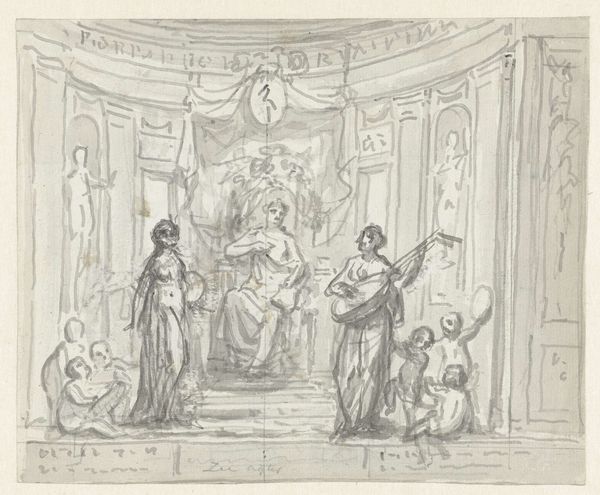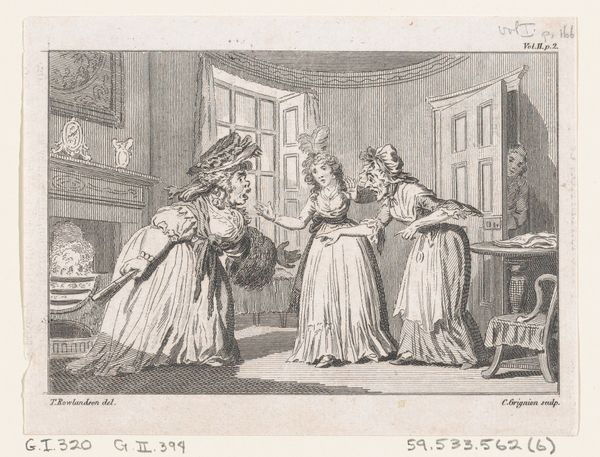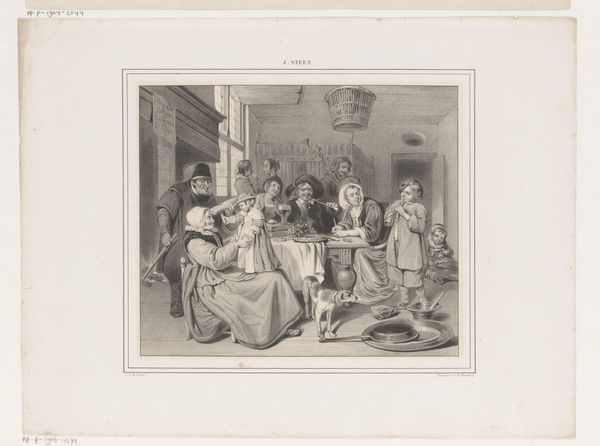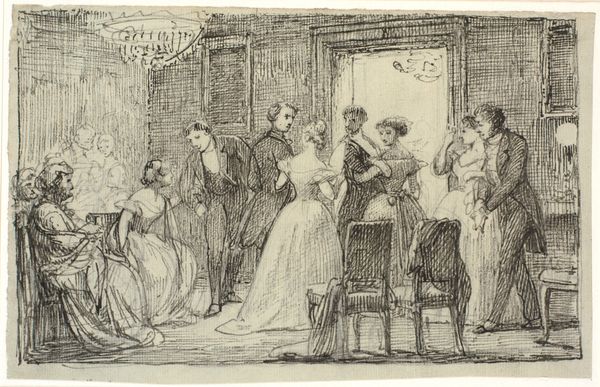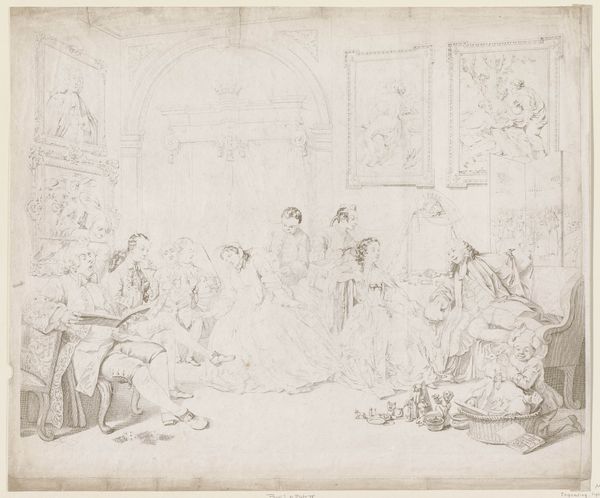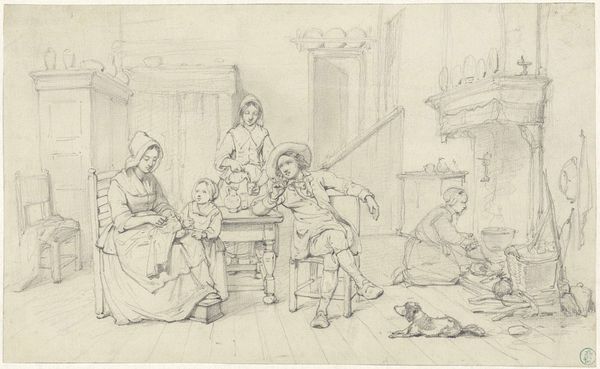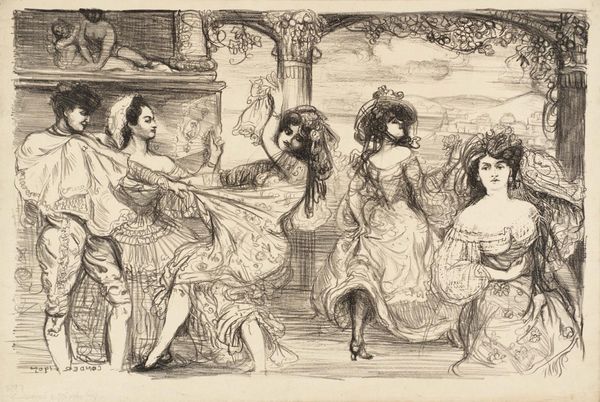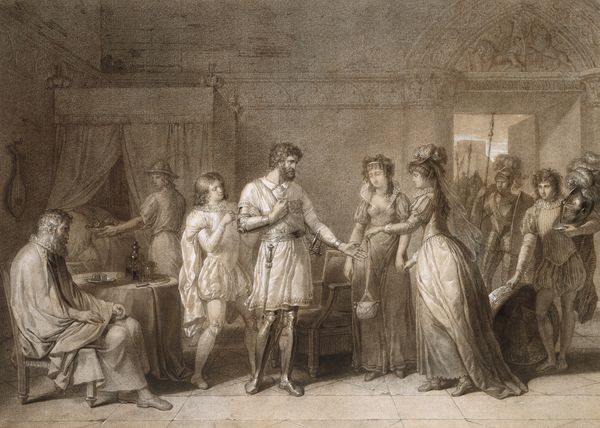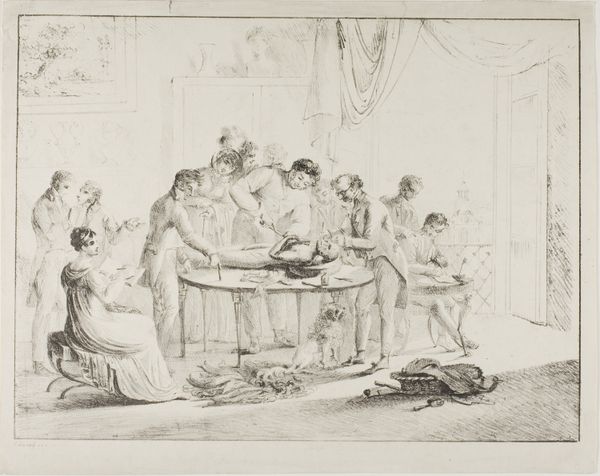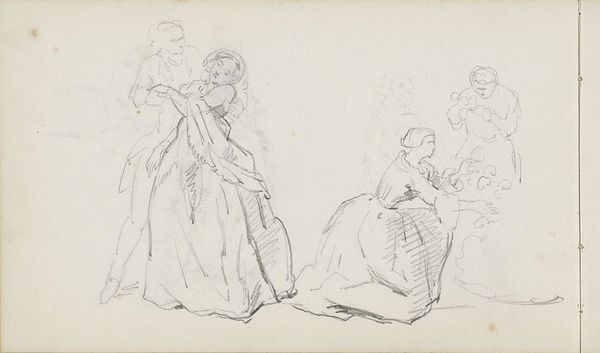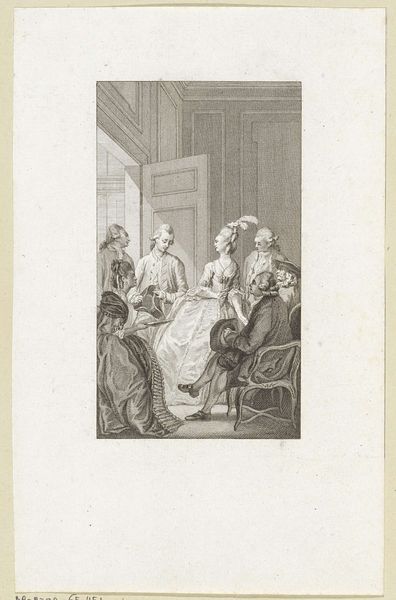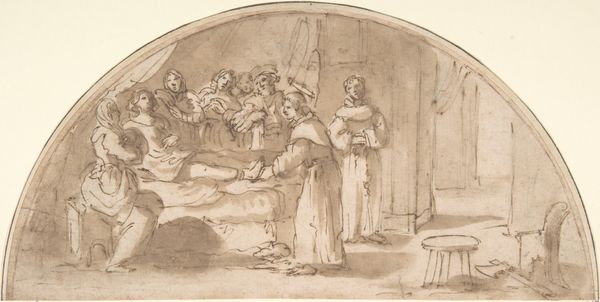
drawing, paper, ink, pen
#
drawing
#
comic strip sketch
#
narrative-art
#
mechanical pen drawing
#
pen illustration
#
pen sketch
#
paper
#
personal sketchbook
#
linework heavy
#
ink
#
sketchwork
#
pen-ink sketch
#
pen work
#
pen
#
genre-painting
#
storyboard and sketchbook work
#
academic-art
Dimensions: height 289 mm, width 352 mm
Copyright: Rijks Museum: Open Domain
Curator: What we’re looking at is a drawing entitled "Toneelscène uit Jacob Simonsz de Rijk", by Pieter Bartholomeusz. Barbiers, dating from between 1782 and 1837. Editor: It definitely feels like a snapshot of a theatrical scene, and the stark ink on paper gives it a sense of immediacy. What story do you think the artist is trying to tell us? Curator: As a materialist, I'm drawn to the process here. The use of ink and pen suggests a rapid execution, maybe even a preliminary sketch. Notice the level of detail versus the rather plain rendering of certain background figures. It raises questions about the accessibility of theatrical productions and artistic training to different social classes at the time, and how this division might be materialised. Who had the resources to create or purchase elaborate finished drawings? What type of paper was it done on? Editor: I hadn't really considered that angle. I was focusing on the narrative implied within the sketch. Curator: And that's valid, but even the narrative is constructed through material choices. The relatively ephemeral nature of ink on paper versus a grand oil painting shifts the work from a finished piece into perhaps a form of record keeping or documentation. Consider, too, the implications of drawing as a form of labour. What sort of labor do we see in it? Does that perspective alter your reading of the narrative at all? Editor: Definitely. Thinking about it as a commodity or documentation of labour, makes me rethink the figures and their roles in both the depicted drama and the larger social one. Curator: Exactly. By looking at the materials and process, we can unpack so much about the artwork's context. I see these elements being central in unlocking a far wider understanding of the social structures embedded in its time. Editor: This has totally changed how I’ll look at drawings from now on. Thanks!
Comments
No comments
Be the first to comment and join the conversation on the ultimate creative platform.
